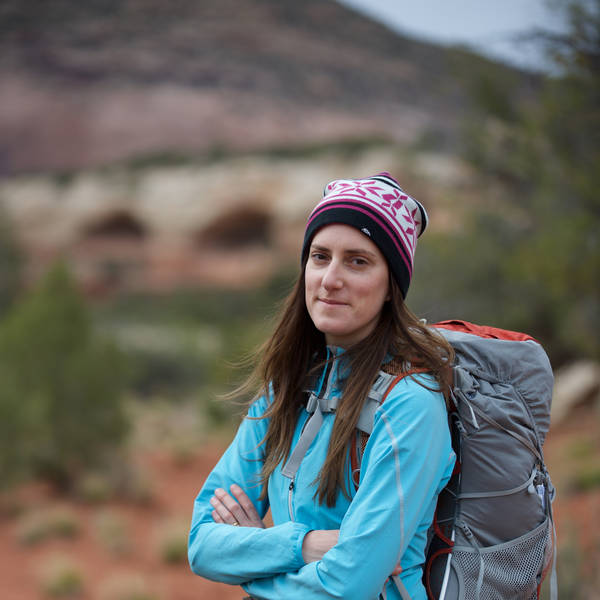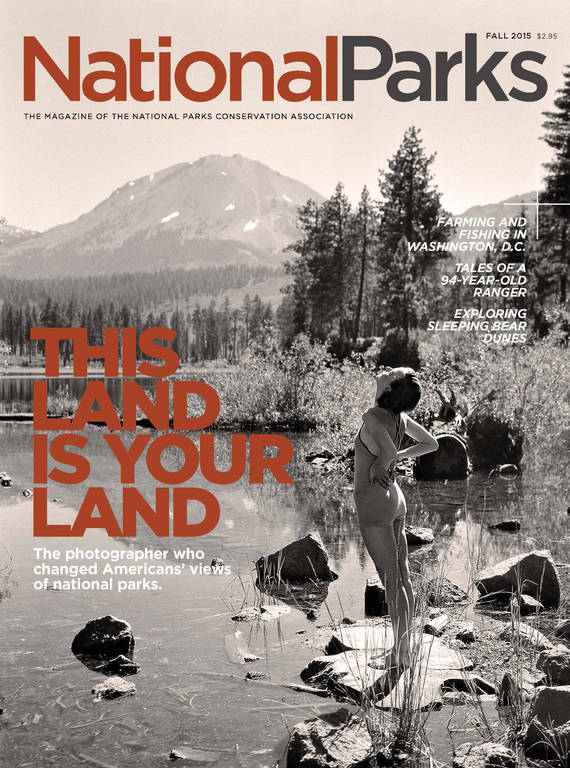Fall 2015
If a Tree Falls, They’ll Hear it
An innovative tool calculates the level of noise pollution across the country.
The next time you’re in a national park, listen closely. As dusk arrives at the bottom of the Grand Canyon, insects trill, frogs croak, and cottonwood leaves rustle in the breeze. In Rocky Mountain National Park, rockfall clatters down granite cliffs, and on top of a quiet peak in Yosemite, you might hear the swoosh of an eagle’s wings.
The National Park Service is charged with protecting soundscapes like these. Since the 1970s, however, car and plane traffic has skyrocketed, outpacing U.S. population growth and making almost all of our lives louder. The racket affects not only wildlife, from mating behavior to population counts, but can also harm humans, contributing to health problems such as cardiovascular disease. On the flip side, studies suggest that taking in natural sounds can actually relieve stress. But amid the growing din, the task of protecting those sounds, from the song of a canyon wren to the ripple of a creek, has become more challenging.
Over the last three years, researchers at the Natural Sounds and Night Skies Division of the Park Service have developed a powerful new tool that could help: a series of maps that illustrate the predicted median sound levels across the United States on a typical summer day. The maps were created from about 1.5 million hours of recordings in parks, noise data from cities, and a machine-learning algorithm that can teach itself to find patterns in the data. The algorithm predicts sound based on factors such as topographic features, vegetation cover, hydrology, and population density. Unlike other tools, these maps illustrate both real noise and what the country would sound like without humans, offering a powerful benchmark for conservation efforts. The maps will also be useful for other researchers, including a team at the Harvard School of Public Health, which plans to investigate links between noise pollution and disease.
“When we first conceived the idea, we didn’t know if it would work,” said Kurt Fristrup, a senior scientist in the Natural Sounds and Night Skies Division. “Now, at some sites, the accuracy of our predictive model is beginning to approach the accuracy of our measurements.”
The inspiration for the sound maps originated several decades ago, when visitors and park managers began to notice that the buzzing of planes in the Grand Canyon and the high-pitched whine of snowmobiles in Yellowstone spoiled the quietude. In 2000, the Park Service founded the natural sounds program to study and regulate the mushrooming number of air tours in national parks and to preserve natural quiet from other intrusions. But the first step to protecting soundscapes, staff realized, was to understand them.
For many years, the division’s acoustic scientists sloshed through wet meadows and shivered in minus-20-degree breezes to set up sound-level meters and audio recorders in remote areas of parks from Denali to the Everglades. “Compared with what we’re doing now, that was the Dark Ages,” said Frank Turina, the division’s program manager. The process yielded many hours of recordings, but it was expensive, exhausting, and impossible to measure everywhere. Researchers began to brainstorm other ways to gain a comprehensive picture of sound in the parks.
Fristrup was the first to ask if they could use emerging technology to accomplish as much—or more—at their desks as they could schlepping over mountains. He wondered: “Could we take the massive data we had already and get enough leverage to begin to predict what the measurements would be in places we’ve never been?”

National Parks
You can read this and other stories about history, nature, culture, art, conservation, travel, science and more in National Parks magazine. Your tax-deductible membership donation of $25 or more entitles…
See more ›Dan Mennitt, a research scientist for Colorado State University and the Park Service, tested more than a dozen machine-learning algorithms, ultimately finding one, Random Forest, that could tease out links between certain climatic and topographic features and sound levels. He then used the algorithm to predict sound levels for the entire country, illustrating his findings with the maps.
“The maps have helped decrease our reliance on field work,” said Mennitt. “More importantly, we now have a fairly good understanding of what existing conditions are, and natural conditions could be, in most places.” This is allowing the division to switch from simply trying to understand the wealth of natural sounds in parks to protecting them, particularly in the quietest, most sensitive places, which are usually dry, remote, and barren. In these deserts, even the noise from one truck can travel over many miles.
“Some parks are uniquely quiet or have a certain interesting characteristic acoustically that they want to protect,” said Turina. City of Rocks National Reserve, in Idaho, for example, is exceptionally quiet, with few overhead flight paths or plants that rustle. Rocky Mountain National Park is known for its exceptional elk bugling, which draws visitors from across the country.
Already, the division has devised nifty tools to help reduce noise. Emma Brown, an acoustical resource specialist, is overseeing an educational pilot project in Crater Lake, Glacier, and Rocky Mountain National Parks and Devil’s Tower National Monument that began in 2013. A thermometer-like exhibit displays the noise level of passing motorists, then staff share tips on how visitors can reduce their noise by obeying speed limits, traveling in groups, and avoiding drastic acceleration.
Other solutions are in the pipeline. The Park Service is considering using a type of asphalt known as quiet pavement, which can decrease road noise. The agency also has partnered with Erik Lindbergh, grandson of aviator Charles Lindbergh and an aviator himself, to develop an electric plane for air tours that would reduce noise pollution in parks such as the Grand Canyon.
“There’s the potential for people’s experience in parks to be dramatically enriched once they rediscover the capacity to hear the world as clearly as our ancestors did,” said Fristrup. “If you listen that intently, the ecosystem around you becomes that much more complex and alive.”
About the author
-
 Kate Siber Contributor
Kate Siber ContributorKate Siber, a freelance writer and correspondent for Outside magazine, is based in Durango, Colorado. Her writing has appeared in National Geographic Traveler and The New York Times. She is also the author of “National Parks of the U.S.A.,” a best-selling children’s book.


